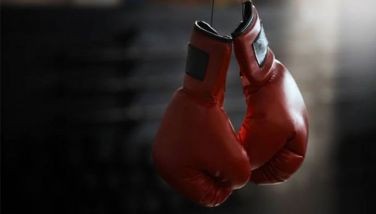Tour de France marks World War I centennial
PARIS — Before sunrise on June 28, 1914, a pack of cyclists set off from Paris on the 12th Tour de France. Hours later, an Austrian archduke stepped out in Sarajevo and was assassinated in the street, igniting the carnage of World War I.
Now, 100 years later, cycling's greatest race is paying special tribute to the millions who fought and died in what came to be known as the Great War. Several stages of the famed Tour de France will run this year along the war's killing fields, trenches and fronts in northern France and Belgium.
The 1914 Tour was the last before a five-year suspension due to the war. Of the 145 riders that day, 15 of them, including three Tour champions, would die in the fighting.
In all, an estimated 45 cyclists who had raced in pre-war Tours were killed in the 1914-1918 war, according to cycling historian Jean-Paul Bourgier.
The Tour itself has a complicated history with the war. Its founder, Henri Desgrange, joined in the warmongering, using his L'Auto newspaper to issue a lusty call for his countrymen "to go get those bastards."
"When your rifle butt will be on their chest, they will ask you for forgiveness. Don't let them trick you. Pull the trigger without pity," Desgrange wrote, according to Graham Healy's book "The Shattered Peloton."
After the war, Desgrange pledged to never let a German rider compete in the Tour, a threat that was never carried out.
This year's three-week Tour begins July 5 in Leeds, England, before crossing the English Channel three days later. Riders and fans will have several occasions to pay homage to war victims: Stages 5 through 10 largely trace the 400-mile (645-kilometer) long Western Front, from Ypres, Belgium, to the Swiss border near the northeastern French city of Mulhouse.
An estimated 5 million combatants died on this front during the war, the British government estimates. Most are still buried there in immaculately landscaped military cemeteries or under farmers' fields in unmarked graves.
Stage 5 starts in Ypres, the killing ground immortalized by Canadian soldier-poet John McCrae in his poem "In Flanders Fields:"
"We are the Dead. Short days ago
We lived, felt dawn, saw sunset glow,
Loved and were loved, and now we lie
In Flanders fields."
Riders will assemble that day within sight of the Menin Gate, a memorial dedicated to the 54,405 British and Commonwealth casualties whose graves are not known.
Not far from the Stage 5 start is cycling's iconic Kemmelberg Hill. As recounted by Healy, Frenchman Camille Fily, at 17 the youngest-ever Tour rider, was shot and killed around there late in the war while serving as a bike messenger. Among the many nearby war memorials is the Kemmelberg French Ossuary, where the bodies of 5,294 French soldiers lie buried.
The Stage 6 start in Arras takes riders near France's largest military cemetery, Notre-Dame-de-Lorette, where 40,058 French war dead are buried. Among them, most likely, is 1909 Tour champion Francois Faber of Luxembourg.
Less than a month after finishing ninth in the 1914 Tour, Faber enlisted in the French Foreign Legion. He was killed the following May during the Battle of Artois, just north of Arras. His body was never found, but a plaque in his memory can be seen in the Notre-Dame-de-Lorette church.
Faber won the 1909 Tour with a display of sheer dominance. He won 6 of its 14 stages, including five in a row — a record that still stands — and led the race from Stage 2 to the finish. He won despite breaking his chain a kilometer (about 3,300 feet) from the finish line in Paris. Carrying his bike, he ran to the finish line, where he was mobbed by fans.
Faber was offered a spot as his military unit's cyclist in 1915 but refused.
"I prefer to serve in the trenches. I know all about trench work and I have more chance of bringing down Germans there than as a cyclist," he said, according to Healy.
Stage 6 also takes riders along Chemin des Dames, a 30-kilometer ridge road and the site of one of the most disastrous French offensives of the war, where hundreds of thousands of men were killed in only a few weeks.
Two other Tour champions died near the route of Stage 7, from the Champagne town of Epernay to the northeastern city of Nancy; Octave Lapize, the 1910 winner, and Lucien Petit-Breton, a two-time winner in 1907 and 1908.
Lapize, who once famously called Tour organizers "assassins" for sending riders up impossibly steep climbs in the Pyrenees mountains, died when his biplane was shot down in a dogfight on Bastille Day, 1917, near the village of Flirey. This year the Tour will pass through Flirey on July 11.
Petit-Breton, who took part in nine of the first 12 Tours, was killed in an automobile accident while on an army mission near the front, which riders will trace on the way to Nancy.
Stage 7 also passes Verdun, a pivotal World War I battlefield where an estimated 300,000 French and German troops were killed — most ripped apart by the apocalyptic shelling that permanently disfigured the landscape.
Before the riders leave the battlefields behind and attack the Alps, one last, poignant reminder of World War I awaits. As they travel from Mulhouse to Besancon for the race's first rest day on July 15, the road passes close to the tiny village of Joncherey.
The village has a memorial to Jules-Andre Peugeot — a 21-year-old corporal killed in a skirmish with German troops on Aug. 2, 1914, making him the very first casualty on the war's Western Front.
- Latest
- Trending




























